Do you like giant robots? Do you like mechs designed by robot designer Hajime Katoki? Do you action-packed experiences? Then you must like Virtual On!
Since its creation in 1996, the Virtual On series has seen four entries appearing on a variety of platforms. While, that’s a decent amount of games it may not be enough for the many Virtual On fans out there. In response, we’ve compiled a list of 10 games we feel Virtual On fans may enjoy.
Hit the jump to read our entire list!
10. Dragon Ball Z: Budokai Tenkaichi 2
Josh Newey: I’ll warn you right away—I run a real risk of making a fool out of myself here. I have never understood the appeal of the Dragon Ball Z series, so discussing a Wii fighter bearing the legendary name feels more than a little blasphemous. Fans of the series, forgive me for any missteps. I humbly kneel at your feet (and then go and watch some Biker Mice from Mars instead).
The first time I played Dragon Ball Z: Budokai Tenkaichi 2, it was at a close friend’s house on a lazy Saturday afternoon. He had obviously been playing the game for some time before I visited, as his fluency with the controls and flashy combat really put me to shame. He was singing fervent praise for this game I had never touched, claiming that its combat was enormously strategic and stressful (in a very good way), and what I saw on his TV had me wanting to try it almost immediately. Onscreen, all I saw was two angry, vociferously powerful characters, soaring across plains that seemed miles wide, beating each other senseless while dodging their opponent’s gigantic, glowing blasts of energy. While watching this surprisingly intense, almost aerial fighter, the only thing my mind kept leaping to was, “Virtual On: Oratorio Tangram.”
Watching my friend flail his arms in elaborate circles, ending in a violent thrust toward the screen, I couldn’t help but feel a little intimidated by the apparently athletic control scheme. But once I actually sat down with some of the game’s earlier battles, I quickly fell for its over-the-top high-flying matches, which seemed to rely more on the back-and-forth struggle for power than the standard whittling away of life. While the controls are certainly prohibitively difficult to grasp, the basic gameplay is unlike almost any other one-on-one fighter I’ve ever had the pleasure of picking up. Even so, this game’s insane feeling of power, wide arsenal of exciting moves, arena settings, and reliance on mid-air, long-range combat is sure to make any Virtual On fan at least a little intrigued. If it can make me interested in Dragon Ball Z, it can do anything.
9. Phantasy Star Online
Kris Knigge: Phantasy Star Online Reminds me of Virtual-On in aesthetic ways more than anything. Sega has always had really clean looking Sci-Fi universes, and while PSO isn’t quite as sparse as Virtual-On, it sort of taps into the same appeal. Although the robots aren’t usually fighting each other, it’s just fun to outfit a robot (Cast) with another robot (a MAG, hopefully looking particularly ornate), and watch it go off into the woods with big guns and a few friends to go fight a dragon. Weird how that taps into the same appeal as Virtual-On, but trust me. The skill based combat and trap-laying doesn’t hurt either.
8. Mobile Suit Gundam: Federation vs. Zeon
Flake: It would be impossible not to mention at least one Gundam game in any list having to do with Virtual On. The similarities between Virtual On’s robots and the mobile suits of the Universal Century are pretty obvious. Of all the many (many, many, many) games about Mobile Suit Gundam, none is more like Virtual On than the original Federation vs Zeon.
It is essentially a slower paced, more strategic Virtual On with great use of licensed material and no need for any insanely expensive specialized controllers. You choose your side and a robot and duel with hordes of enemy robots (two at a time) in arenas throughout space, the colonies, and Earth. The key to the game is managing your resources. Instead of a life bar, you have a resource bar that represents how many times your side can replace its robots. The strategy is to choose a robot that matches your play style – Novices who die a lot will want to choose a grunt suit to maximize the amount of times they can die. If you are excellent at avoiding damage, taking an elite robot like a Gundam makes more sense. Gameplay is arcade simple and insanely addictive – the hall mark of a good Sega (or Sega like) game.
The port of the game that made it to the Dreamcast is another example of a Better Than Arcade Perfect port – in addition to the original arcade game, campaign modes have been added. Sadly, the game was only ever released in Japan. If importing is not your style, a slightly less graphically impressive version of FvZ:DX was localized for the PS2 and most of the sequels made it there as well.
7. Sin and Punishment: Star Successor
Josh Newey: One of the most pervasive pleasures of the Virtual On series is dodging an incessant wave of oncoming gunfire and explosions, following it up with your own strategically-placed wave of devastation. I know this sounds like something you see in just about every third-person shooter, but the way Virtual On uses jet-packed jumping, evasive strafing, and flashy, constant gunfire gives the combat a distinct aftertaste of an over-the-shoulder shmup.
That description fits no other series better than Sin and Punishment, especially the second game. More than any other third-person shooter I’ve played this generation, Treasure’s underplayed Wii shooter requires you to develop a finely-tuned skill for dodging, jumping, and navigating your way through a sea of screen-filling gunfire. Unlike Virtual On, you spend just about the entire game auto-running, but the need for twitch reflexes and skillful gunplay drives both games.
I’ll admit that I really had to wrack my brain for games that reminded me of the Virtual On series, and the only reason for that is because I had a hard time realizing that most of the games that come to mind don’t necessarily place you in the metallic shoes of a robot. Sin and Punishment 2 is a thoroughly visual experience, with dazzling, constant locked-on gunfire and a never-ending need to evade your formidable foes, and the way it jumped to my mind for this list was almost reflexive. While the games are disparate in many ways, the spark at the center of their gameplay is fundamentally linked.
6. Armored Core
Flake: Okay, do me a favor and pretend like Armored Core sequels stopped when the series was good. Because it was good. It was amazing. In the 32 bit era, if you did not have a Sega Saturn, Armored Core was the go to game for big robot fans.
Armored Core is essentially what Virtual On would have been if it had not been designed for the arcade. The idea of piloting a robot to dodge attacks, gain line of sight, and move in for melee is still there but in Armored Core logistics become an issue. You design your own robot and have to take into account weight displacement, energy production, weapons, radars, computer systems – pretty much every aspect of your mech is accounted for. Armored Core has a wonderfully fleshed out dystopian universe and the first three games (Armored Core, Project Phantasma, and Master of Arena) feature one of the best story arcs of any robot related game series.
Sadly, through the course of a score of sequels, Armored Core eventually became too complicated for its own good. The series has declined in quality to the point of mediocrity which, in a way, is another thing it has in common with Virtual On. Still, the original Armored Core has aged just as well as the original Virtual On and is just as easy and affordable to get your hands on.
5. Spawn: In the Demon’s Hand
Mike Kyzivat: I know that there are no giant robots in this game, unless you count Overtkill, but he’s more of a cyborg. There’s more to being like Virtual On then giant robots, there’s also gameplay similarities. Spawn: in the demons hand plays pretty similar to Virtual On, in that characters use both projectile and close combat attacks and the game is played from a third person behind the back view. Like Virtual On you run around the arena trying to kill your opponent by any means necessary. It gives you the same feel of arena combat that Virtual On provides. The difference is that there is less emphasis on dodging projectile attacks and some characters only have melee attacks. Because of this, you can imagine that it is not as balanced as Virtual On either. Some characters have a huge advantage over others, but it can still be a fun game as 4 people can play at once. Give Spawn a try if you are looking for a game like Virtual On but with more FPS conventions like quick (sometimes one hit) kills, and the winner decided by the most kills. It’s no Virtual On, but it can be entertaining none the less.
4. Zone of the Enders
Kris Knigge: One of the key differences of Virtual-On from the other mech games of my youth was speed. Mechwarrior Was fun, but plodding, making the insane speed of the VRs in Virtual-On feel incredible by comparison. Zone of the Enders (particularly 2) amped that up to insane levels. All of the speed and melee/ranged combat was there, but in ZoE you were flying, able to dart around your opponents in any direction. Combat is also incredibly versatile, since your mech Jehuty is able to use a ton of different weapons ranging from grappling hooks (that allow you to use enemies as shields) grain any cannons that lock your feet in place and materialize out of thin air.The second game is better by far, but if you enjoy high-speed mech combat, there is absolutely no reason not to own Zone of the Enders. If you can’t find it, it will be getting rereleased as an HD collection sometime this year.
3. Cyberbots
Tom Kyzivat: “Virtual On is cool and all, but wouldn’t it be swell to play a one-on-one robot fighter with beautiful Capcom 2D sprites?” It would be. Too bad no such game exists. OR DOES IT??? Cyberbots, a Japanese-only Saturn game, looked and played much differently from Virtual On, but in the end it comes down to one thing: giant robots kicking the crap out of each other. Cyberbots will always feel like the 2D Virtual On to me, but it does have a lot of its own claims to fame. For one, it features colorful pilot characters, which really add to the story and personality of each robot. And each mech is wildly different from one another, even going so far as to have a giant metal octopus. Need one more awesome thing to convince you? A giant robot mech version of Akuma is unlockable. ‘Nuff said.
2. Transformers: War for Cybertron
Mike Kyzivat: If there’s one thing I love just as much as Silent Hill that would be Transformers. I remember getting an Optimus Prime for Christmas in 1984. (yes, I’m old I know) but that’s a story for another time (probably next weeks podcast). War for Cybertron is easily the best Transformers game ever made, and has many, many characteristics that match up with the Virtual On series. Granted, War for Cybertron is more of a FPS from a third person view, but that is just one aspect of the game. First and foremost you have a bunch of giant robots fighting each other in a big open arena, if that doesn’t scream Virtual On then I don’t know what does. Secondly you mostly fight with guns, but do carry a powerful melee attack that can sometimes (depending on the character) kill them in one hit. And thirdly you can transform into vehicle modes and fire on your opponent, which is the ability of one virtualoid named Viper. Their are even both male and female robots in both games. On paper these are practically the same game, the list just goes on and on…
1. Tech Romancer
Tom Kyzivat: GIANT ROBOTS! You want giant robots? Tech Romancer’s got giant robots! If you like Virtual On, then you’ll love Tech Romancer! What kind of robots are you into? Mazinger Z? We’ve got that. Robotech? We’ve got that. Evangelion? No problem. Transformers? How about robots that transform and link together? Not only do you get robots, but they’re based on all of the most beloved robot franchises around. Whereas Virtual On pits you against one another in a third-person viewpoint, Tech Romancer is a clever twist on the classic 2D fighter, but in glorious full 3D graphics. So play it today! But don’t check your local store, because Dreamcast games are only sold online. Shame. GIANT ROBOTS!!!


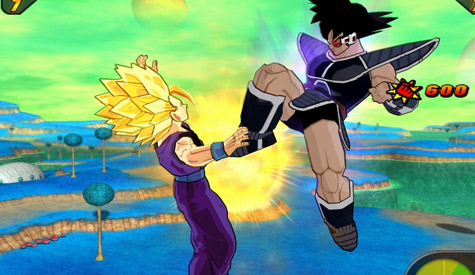
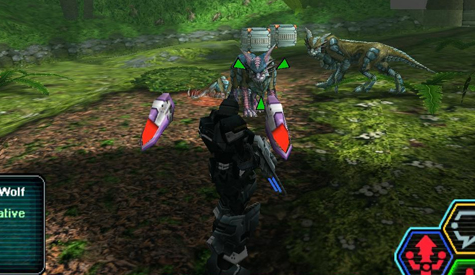
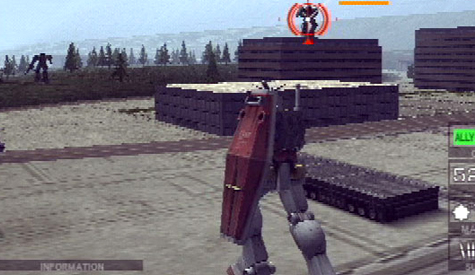


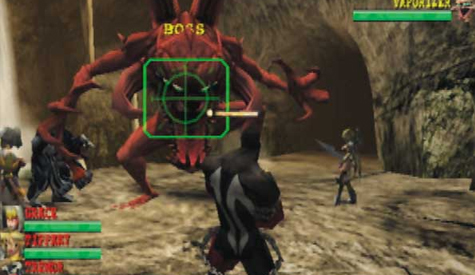
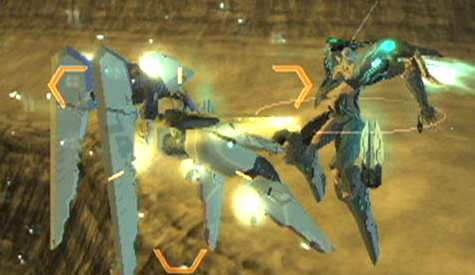

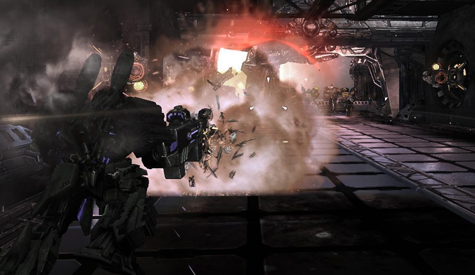


Hmm Senko No Ronde is a top down voot kinda… it’s really a psychic force inspired game but most people haven’t played that i guess… bullet pattern fighting and distance driven melee is also in psychic force…
I remember playing a 2D Gundam fighting game on the SNES I think that seemed exactly how a Virtual-On game would be if it were in 2D.
Armored Core and Zone of the Enders look like interesting games to try sometime. I am reminded of another game I have played called Slave Zero for the Dreamcast.
@SonicfanRich
I loved Slave Zero, and seem to be in a small boat with that opinion. I should track that game down and give it another go.
@Scott
Yeah, I can’t remember it too well anymore. I do remember finding it interesting to step on little people.
@Scott
I wanted to love Slave Zero so much. But the controls were godawful, and I’ve never been in a virtual city that felt less like an actual city. It was just a grey handful of blocks with little cars whizzing by every now and then. I remember I’d keep returning to it, desperate to convince myself that it was worth my time, but I always walked away so absolutely bored that it hurt.
I agree with Josh. I played the demo for many years on the Dreamcast and wanted to like the game but it never really felt like you were controlling a giant robot and the graphics looked pretty drab even for the time. I eventually got the full game a couple years ago and realized the demo was all you’d ever need. However, I think the PC version is supposed to be a little better.